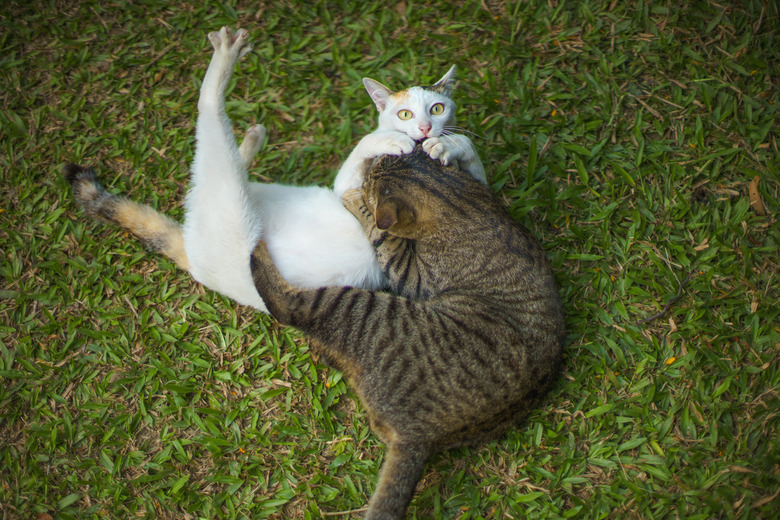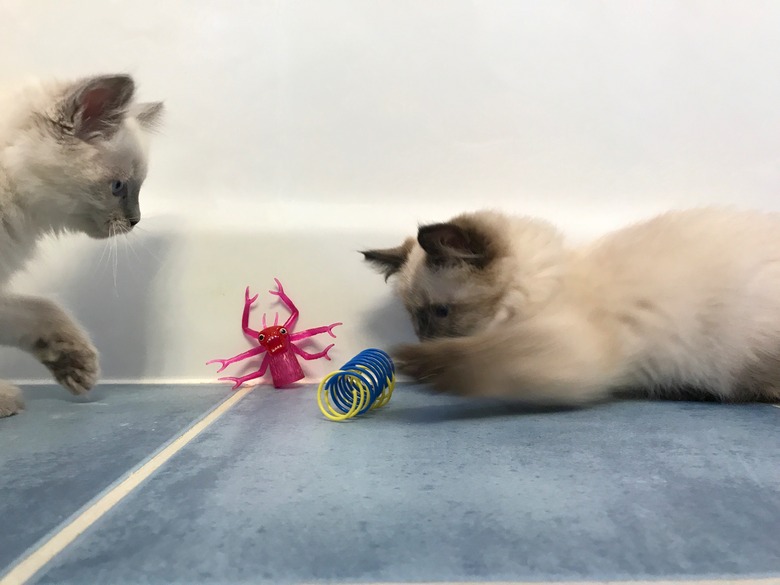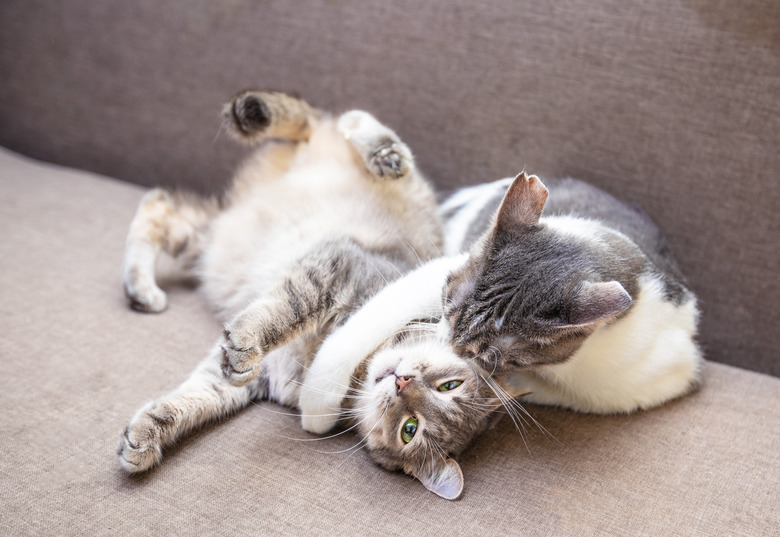Are My Cats Playing Or Fighting?
Tumbling, rolling on the ground, gripping and lightly biting the other — when it comes to cats, these can describe playful behaviors or signs of a fight. Since some of the motions and movements look so similar, how can you know whether your cats are playing or fighting? Understanding basic cat body language can help you spot the difference, as will keeping in mind a few key signs that your cats are headed toward an aggressive outburst.
Do cats play fight?
Do cats play fight?
We see dogs romp around and play fight all the time, but does the same ring true for our feline friends? Vet Info assures that yes, cats do play fight, and for good reasons! Cats will often engage in mock aggression, or play fighting, to meet their primal need to hunt and guard their territory, both of which are essential to the survival of a cat in the wild.
An adult cat may act out in this way to put her fellow feline housemate in his place, possibly to guard her food or favorite spot on the couch. Grown cats can also play fight to burn off any pent up energy or frustration out of boredom, which rings especially true for indoor cats, who aren't able to get most of their hunter's needs met from the confines of their home or apartment. Kittens often partake in rough play as a way to hone those hunter's skills, and will often practice with littermates or other cats that they share space with.
How to tell the difference
How to tell the difference
If you wish to spot the difference between play time and a cat fight, you'll need to familiarize yourself with typical body language behaviors cats typically display. Because cats cannot speak, they rely on their bodies to get the message across, both to their fellow felines and the people around them. One thing to watch out for is ears placement — if your cat has her ears pointed forward and not laid back flat against her head, she's likely in a play posture and is only having fun. Recognizing cat play can be a little confusing, as their movements often replicate the hunting behaviors they rely on outside, like stalking, pouncing, and even tackling and biting the other, yet always releasing before things go too far.
Aggressive behaviors can be spotted by identifying what the Humane Society refers to as defensive postures. These mannerisms almost always indicate that your cat is in a fight with another cat, and include ears that lay flat against the head, a puffy tail, and a crouching position with the cat's legs and tail tucked underneath the body as if that cat is ready to spring for an attack. Additionally, an agitated cat will often make a hissing or yowling sound, which usually serves as a warning for offenders to stay away, or else. If you notice that your cat is in a fight with another cat, you can break it up by making a loud noise, like stomping and yelling, or splashing the cats with water if you have any nearby.
Kitten vs. adult cat behavior
Kitten vs. adult cat behavior
If you find yourself wondering whether your cats are playing or fighting, one thing to consider is the age of the felines involved. According to the ASPCA, young cats, including kittens, will often engage in rough play. How can you tell that they are, in fact, playing? When the moves are reciprocal you most likely have a play fight on your hands and should have nothing to worry about. If one cat seems to be getting cornered or appears to be attempting to run away from the other cat, however, you may have some bullying or fighting going on, in which case you'll want to prevent things from escalating further to avoid potential injuries.


